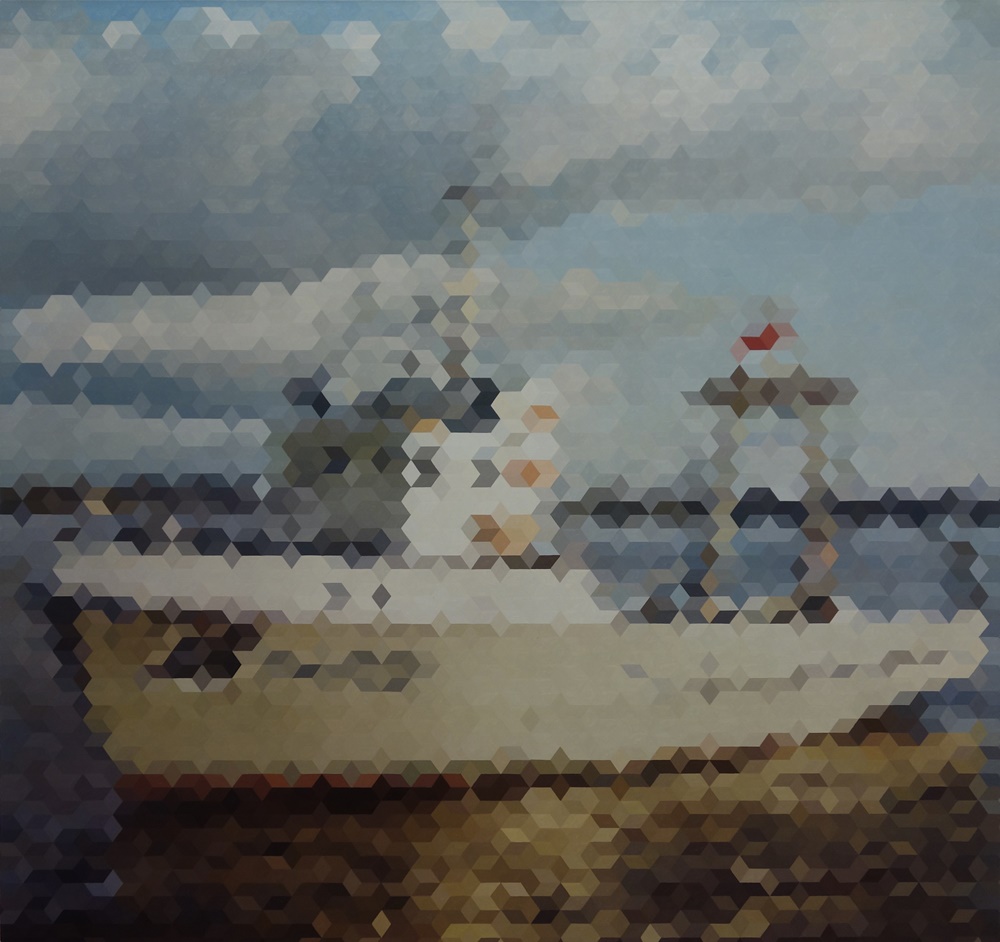Galerie Richard New York will present in 2018 a series of group shows related to digital painters. Digital painters regroup painters who have embraced either the specific aesthetics related to digital screens or/and painters using digital hardwares and softwares which allow them to create new paintings which could have not existed without them. The first exhibition presents Alex Brown and Philip Argent, two artists who were part of the Post-Digital Painting exhibition at the Cranbrook Art Museum in 2002 curated by Joe Houston, Joseph Nechvatal, a major figure of the first generation of digital painters, and David Ryan, who defines his paintings as 2.5 D paintings.
Artists:
Joseph Nechvatal, David Ryan, Alex Brown, Philip Argent
Available:
December 15, 2017 -
January 31, 2018
About:
It is ironic that in the late 90’s a large part of the intellectual artistic community considered that Painting was dead when in fact it was the moment when it regenerated by the appropriation of the digital third industrial revolution. The long history of the medium of painting gives a distance a...
more >>
It is ironic that in the late 90’s a large part of the intellectual artistic community considered that Painting was dead when in fact it was the moment when it regenerated by the appropriation of the digital third industrial revolution. The long history of the medium of painting gives a distance and possibilities of historical dialogues that no other new medium will ever offer. Philip Argent, Alex Brown, and most of artists of Post-digital painting exhibition are the iMac generation, the first generation of young artists who widely had access to computers and creative softwares. “The internet has altered the flow of information in our electronically connected culture. Ideas stream more discursively now as concepts easily can be linked from disparate sources into reconfigurable chains of meaning. Our thought processes are made more flexible by the new epistemological model of hypertext, the non-hierarchical interconnection of data which structures knowledge in cyberspace. This new language-of-links fins its pictorial expression in the disjunctive paintings of Philip Argent who envisions the picture [plane a void into which imagery randomly downloads”. With cascading windows of texture and pattern the artist recasts the modernist aesthetic of “painterly incident” in the technological terms of the World Wide Web (1). Although Philip Argent paintings have no texture and are perfectly plane with acrylic paint, they embrace flat and three-dimensional spaces on canvas. Everything is very detailed although we don’t know what is the subject. Viewers refer some parts of the new paintings to geographical maps from satellites. Other parts of the paintings have flesh colors although the artist was surprised that the viewers considered them as flesh parts. This patchwork of fragmented images and spaces embrace our way to constantly visualize vacant fragments of data, and multi screens information. “With systematic rigor, Alex Brown reconstitutes images through an abstracting procedure of modulation. Using banal photographs culled from disparate sources such as brochures, magazines and websites, Brown sublimates the image into a standard schematic structure. Interested primarily in the formal semantics that result from the evolution of visual data, he chooses an image b=not for its content but for its useful formal qualities. While this procedure superficially mirrors the methods of bitmapping and filtration made possible by photo-editing programs, Brown, in fact, process these transformations without the aid of the computer. His keen sensibility is informed nevertheless by the technologies that have impacted the contemporary viewpoint” (1). In the painting titled Boat, Brown has turned every flat pixel into a three dimensional cube, completely altering our sense of space. Joseph Nechvatal is the part of the first generation of digital painters, working with Macintosh in the 80’s. He is a post-conceptual digital artist and art theorist who has been creating computer–assisted paintings since 1988 and has been inserted digital viruses in paintings since 1992. Nechvatal‘s paintings are visually complex superimposed layers of images, mostly related to external and internal parts of the human body, with additional unreadable texts. The artist has been mainly impressed by the devastating spread of the HIV virus in New York City and he conceptually referred to this subject by the implementation of a digital virus in his paintings. As the virus develops and expands in time into an initial composition on the artist computer, he selects a moment as a painting which will be made by a robot. David Ryan is a Post-digital painter beginning with small drawings with a mouse and transforming them into three dimensional wall paintings by assembling (mostly) monochrome panels cut by water or laser jet robot. His small drawings with the computer mouse are a mix of control and random. David Ryan accepts some uncertainty and accidental interferences in every steps of his creative process which also happens on screens with all data flux. His 2.5 D paintings play with the digital virtual sense of three dimensions that 2D digital images can extend.






